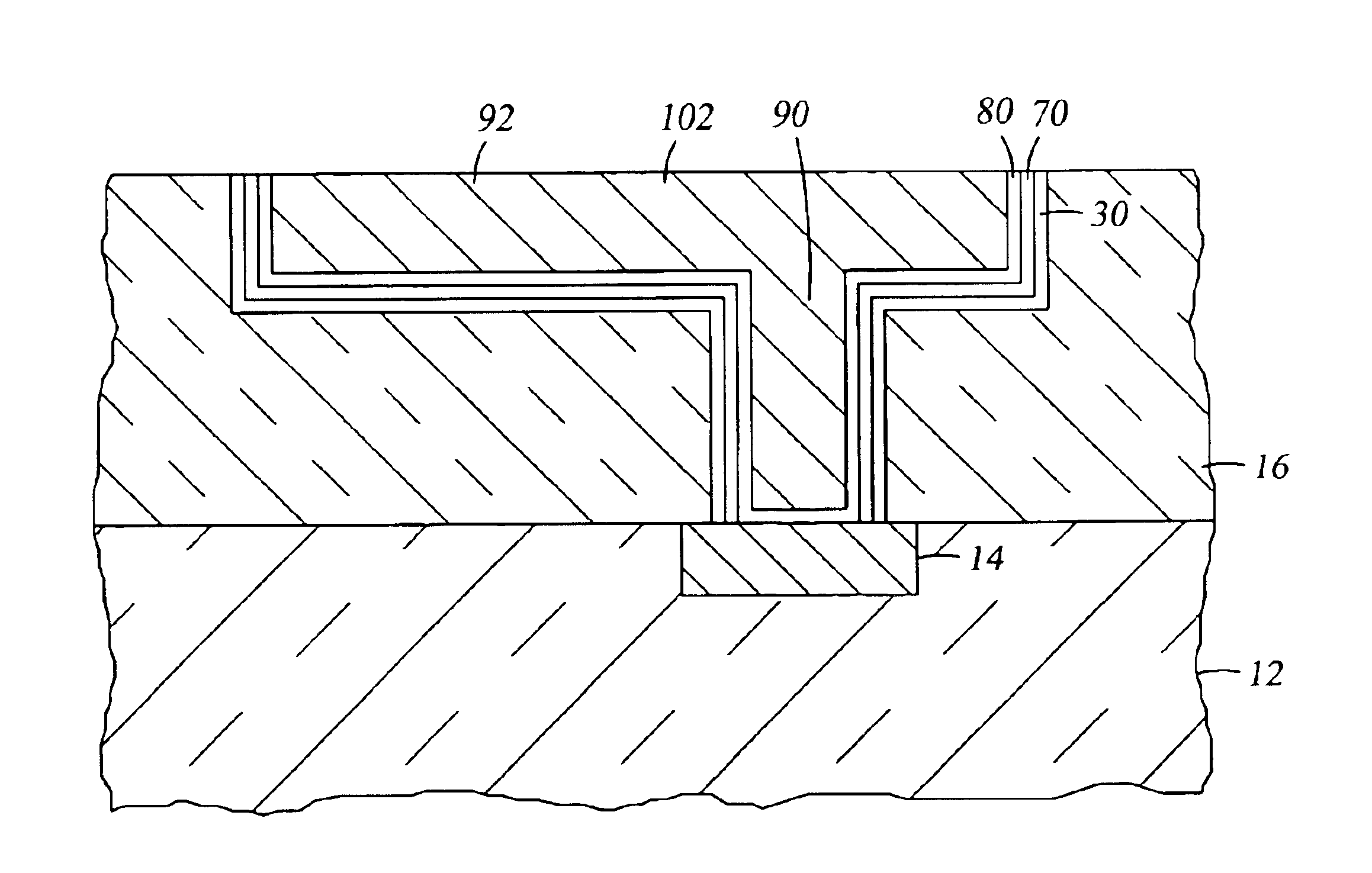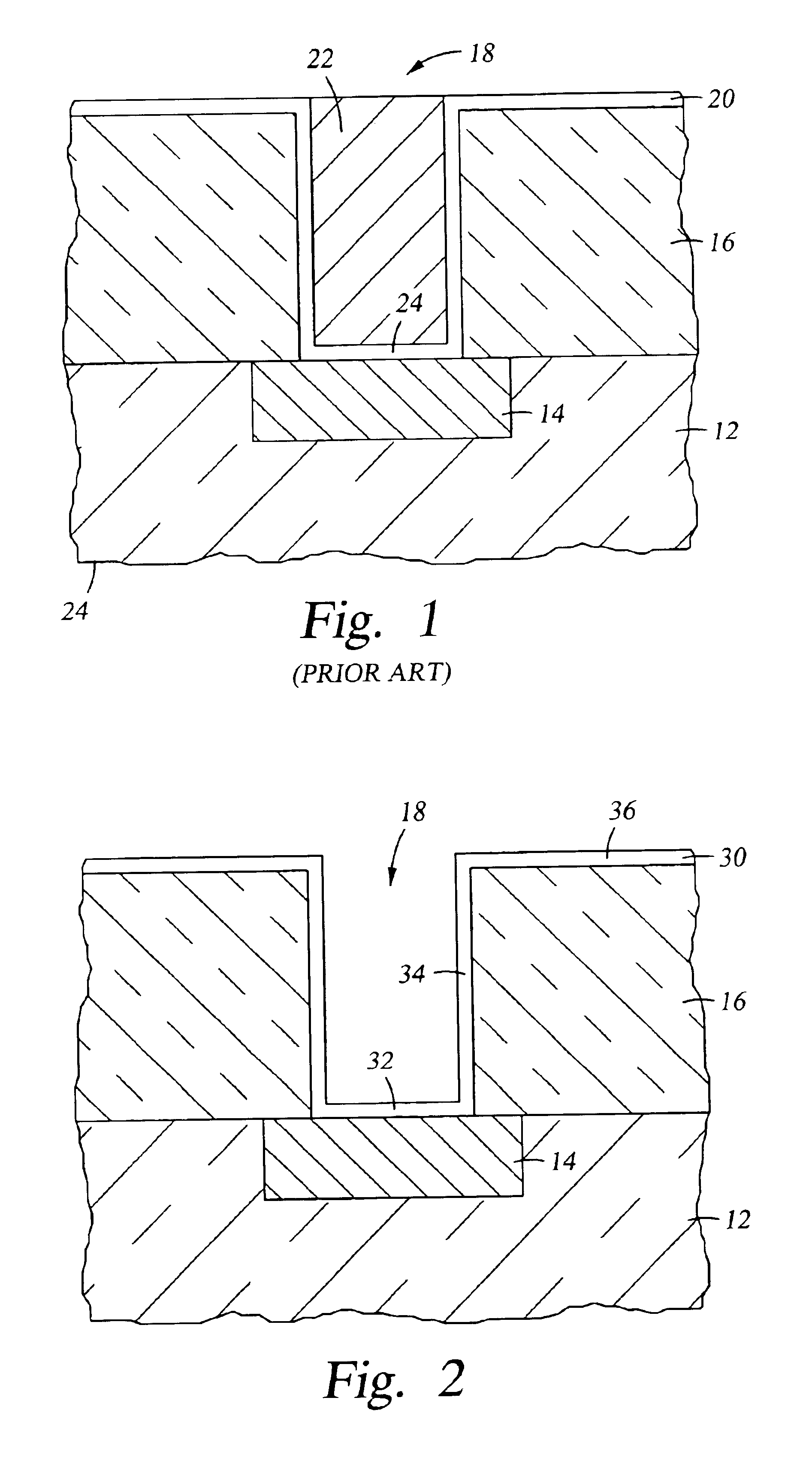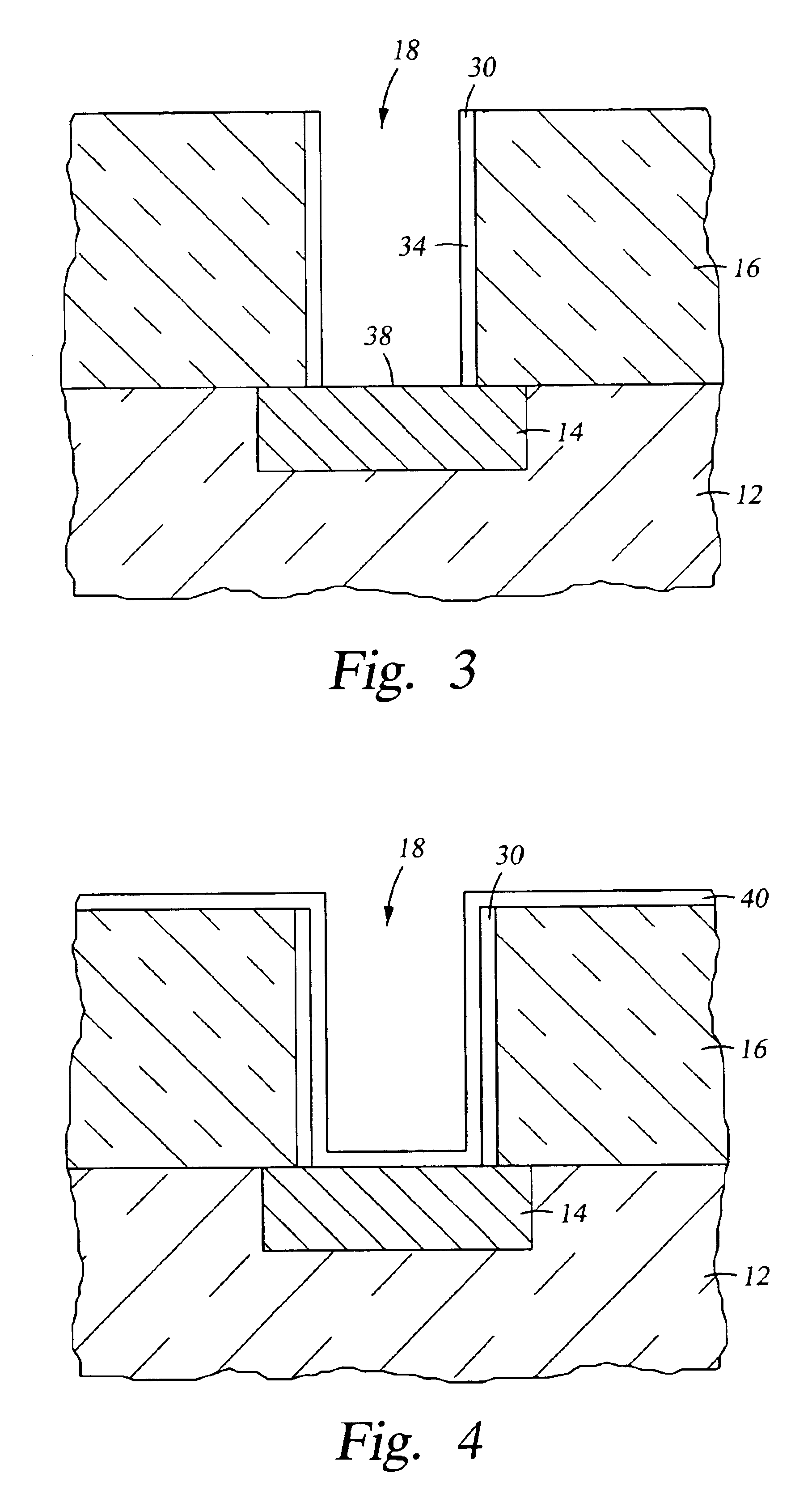Tantalum barrier layer for copper metallization
a technology of copper metallization and barrier layer, which is applied in the direction of basic electric elements, semiconductor/solid-state device manufacturing, electric apparatus, etc., can solve the problem of process deleteriously and remove the barrier
- Summary
- Abstract
- Description
- Claims
- Application Information
AI Technical Summary
Benefits of technology
Problems solved by technology
Method used
Image
Examples
Embodiment Construction
[0031]It is has been found useful to form a via barrier in two chambers. The first step is performed in a CVD (chemical vapor deposition) chamber in which a CVD barrier layer 30, as illustrated in the cross-sectional view of FIG. 2, is first deposited having a composition of titanium silicon nitride (TiSiN). Again, the illustrated structure ignores features such as etch stop layers and dual-damascene holes. The CVD barrier layer 30 may be formed by a three-step process in the T×Z plasma CVD reactor, available from Applied Materials, Inc. of Santa Clara, Calif. Zhao et al. describe a version of this chamber and a TiN deposition procedure in U.S. Pat. No. 5,846,332. In the first step, a TiN layer is deposited to a thickness of about 5 nm by a well known process of thermal chemical vapor deposition at about 350° C. using tetrakis-dimethyl-amido titanium (TDMAT) as the precursor gas. Koai et al. describe an alternative plasma CVD process and chamber in U.S. Pat. No. 6,106,625. The therm...
PUM
 Login to View More
Login to View More Abstract
Description
Claims
Application Information
 Login to View More
Login to View More - R&D
- Intellectual Property
- Life Sciences
- Materials
- Tech Scout
- Unparalleled Data Quality
- Higher Quality Content
- 60% Fewer Hallucinations
Browse by: Latest US Patents, China's latest patents, Technical Efficacy Thesaurus, Application Domain, Technology Topic, Popular Technical Reports.
© 2025 PatSnap. All rights reserved.Legal|Privacy policy|Modern Slavery Act Transparency Statement|Sitemap|About US| Contact US: help@patsnap.com



